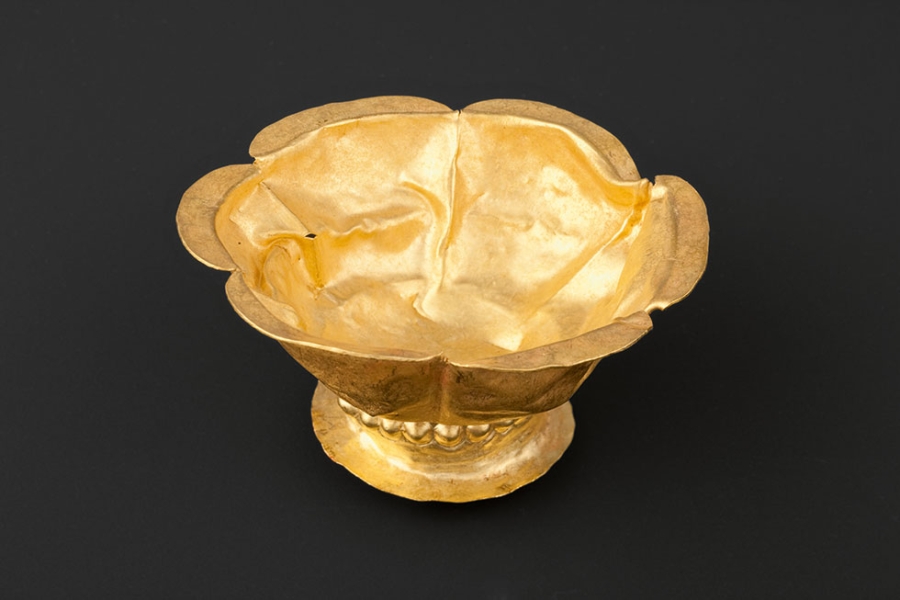 |
| Illustration of a banquet for the town fiesta in Santa Cruz hosted by the parish priest, 1881. From Luzon and Palawan, Marche. |
Some of these were entered into his journal by Alfred Antoine-Marche,
the French traveler and explorer who is reputed to have undertaken the first
systematic excavation of precolonial artifacts in the Philippines. In
Marinduque he excavated a lot of these including precolonial gold. One that would eventually
lead to present-day speculations (some insistent that they're no longer speculations but fact), on what this remarkable island was all-about “in
the beginning”.
Marche timed his visit to Santa Cruz as the whole town was
preparing for the town fiesta (May 3, 1881). He wrote:
“At Santa Cruz they lodged us, my two friends and me, in the most beautiful house of the town, and invitations rained on us-invitations to dinner, to dance.
“I had travelled through a great part of Luzon; everywhere I have found the population, Indian women and mestizas, inclined to dance and to entertain, but on the island of Marinduque this double passion was carried to the extreme. Life is easy there. The soil, prodigiously generous, amply gives the necessary rice, even during the bad years, and during the good ones it produces enough rice to permit its considerable exportation to Manila and Tayabas.
Abaca, cultivated on the side of the mountains, is the finest, the longest in all of the Philippines. Sugarcane thrives there; wood for construction, for cabinetwork and for dyeing, abound there, the meadows are savory there and their livestock are exported to Manila; the sea abounds in fish; in short, whoever wants to move his ten fingers a little, lives there "in clover." It is a real land of plenty.
 |
| Holy Cross Parish in Santa, Cruz, Marinduque. Happy Town Fiesta on May 3. Photo credit: Seller Nolos |
“… The next day was the feast of the town. After the religious ceremony at the church, a procession attended by all the faithful went through the streets of the town, adorned with canopies of greenery and garlands of flowers. In the evening, a big banquet was given by the parish priest of Santa Cruz. He was the son of a Frenchman and a Spanish woman, but he did not know a word of the paternal language. He also had his collection, from which he was willing to deduct a few shells for me..”
Nevertheless, his excavation on the island of Marinduque of
burial caves endowed with skeletons and artifacts including pre-Hispanic gold has engendered some reader
interest. No wonder some of it eventually became part of the historically intriguing exhibition, Philippine Gold: Treasures of Forgotten Kingdoms in New York.
And we’re just starting to share a snippet of this very long, extremely compelling narrative.
Speaking of gold...
In a book found in Spain entitled Collecion General de Documentos Relativos a las Islas Filipinas, the author has described how to locate Ophir. According to the section "Document No. 98", dated 1519-1522, Ophir can be found by travelling from the Cape of Good Hope in Africa, to India, to Burma, to Sumatra, to Moluccas, to Borneo, to Sulu, to China, then finally Ophir. Ophir was said to be "[...] in front of China towards the sea, of many islands where the Moluccans, Chinese, and Lequios met to trade..." Jes Tirol asserts that this group of islands could not be Japan because the Moluccans did not get there, nor Taiwan, since it is not composed of "many islands." Only the present-day Philippines, he says, could fit the description. Spanish records also mention the presence of Lequious (big, bearded white men, probably descendants of the Phoenicians, whose ships were always laden with gold and silver) in the Islands to gather gold and silver. Other evidence has also been pointed out suggesting that the Philippines was the biblical Ophir. Link
And one day soon this will lead you to...

(Music)
Gold
Always believe in your soul
You've got the power to know
You're indestructible, always believe in, 'cos you are
Gold
I'm glad that you're bound to return
There's something I could have learned
You're indestructible, always believe in

